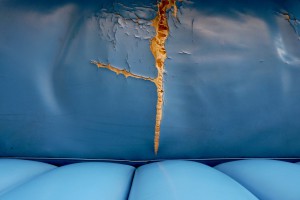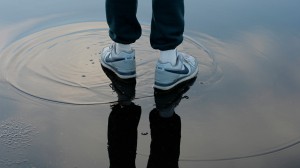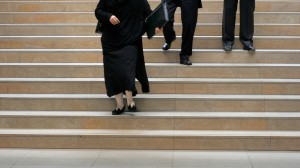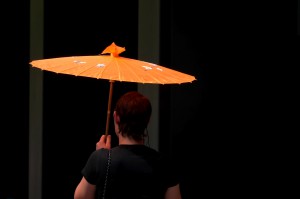Below you find an interview with the author of the book Effortless Beauty of which I talked about in yesterday's blogpost. This interview explains so much better than I could ever do about seeing and photography as an expression, that I wanted to share this with you. The interview was published in the Shambala Times.
Acharya Dan Hessey Interviews Julie DuBose
Acharya Dan Hessey Interviews Julie DuBose
My name is Dan Hessey, and I’m here with Julie DuBose, author of
Effortless Beauty: Photography as an Expression of Eye, Mind, and
Heart. It must be exciting to publish this wonderful book. The
photographs are really beautiful and the writing is extraordinary, really clear.
When I read it I was inspired to interview you so you could share a little bit
of what is in the book as well as your own experience. Your photographs are of
very ordinary situations. It’s not like you’re seeing some kind of mountain peak
that you’ve never been to. You’re seeing parts of your world that you see every
day. This combination of eye, mind, and heart seems to be a very potent chemical
compound.
Julie DuBose: Yes
it’s very potent. Normally only a small amount of our attention at any given
time is focused on something that we see. So if we learn how to bring our
complete attention and our sight together so that the mind and the eye are
linked like a laser, the vividness and intensity of what is seen is beyond what
we normally experience. It can make the experience of seeing the world so direct
and fresh that it wakes us up.

Dan Hessey: You mentioned in your book that when we really touch the moment, we’re expressing a sense of simplicity with no elaboration. How does that sense of everything happening at once simplify itself?
Julie DuBose: This is the fundamental aspect of seeing that we work to develop from the beginning in this practice. We learn to see one thing at a time in each moment. Instead of combining a bunch of different things together, we simplify what we see. We do exercises and assignments to practice this. First we simplify what our intention is, and then we start to experience mind and eye together, seeing as one. We begin with seeing color, very simply, so that we learn to experience what it’s like when eye and mind are synchronized. We focus our intention on seeing color, and then eye, mind, and color come together, just like that.
We start to experience everything pulling together and being unified. We are beginning to attune ourselves to just one frequency, the frequency of seeing with our eye and mind together as one. That’s what brings immediacy and the vividness to our images.
Until you develop the ability to simplify, you can’t see the whole thing at all. You have be still, open, relaxed, and curious.

In this state of mind, you can see simply and take in larger, more complex visual phenomena quickly. Your vision opens up and you can photograph perceptions that you couldn’t even see before. That’s why you start with simplifying.
Dan Hessey: So you’re not simplifying what you’re seeing, you’re simplifying seeing itself.
Julie DuBose: We’re always working with our minds. We’re not trying to change the environment or make it some way in order to see it.
Dan Hessey: This reminds me of the meditative experience during shamatha practice or other kinds of meditation, that there is some sort of coming to a more simple, more direct way of experiencing your sense perceptions. Is this way of seeing related to your meditation practice?
Julie DuBose: Very much so. Except that rather than sitting on a cushion in a special place, such as your shrine room, at a special time, you develop the ability to do it on the spot, moment by moment.
Dan Hessey: So that’s kind of exciting that you use this medium of photography as a way of engaging the wider world meditatively.
Julie DuBose: Yes, although I wouldn’t put that kind of label on top of it.
Dan Hessey: Tell me why not? That’s very important.

Julie DuBose: Because the dividing line between meditation and post-meditation isn’t actually there. It’s dissolved in this practice. What you do is work to develop your stability of mind in the present moment. First of all, you can’t really have any kind of fresh perceptions unless you’re open and available. So what does that mean? It means you have an intention to connect with your world in an ordinary way. We aren’t talking about going extraordinary places, although that may happen, but much more of this is about when you wake up in the morning. Do you notice the sun coming through the window in the morning and illuminating your sheets and pillows?
Dan Hessey: How does the discipline and practice of direct seeing actually work?
Julie DuBose: You have the intention to see and you have the ability to be still, and that’s how you can actually do this. It’s because you’re open and available that perceptions can connect with you, out of the blue. Then, when you’re able to notice that a perception has interrupted the stream of your constant mind chatter, you can rest your full attention on what’s stopped you. You look at it deeply and you rest your mind in the experience of seeing.
This is where it’s like meditation. When a thought comes up, you notice that you’re thinking, and you just bring your mind back to the perception. If you notice that your mind has drifted away, you come back. You develop the discipline to come back over and over to the perception, to stay with it. And if you get distracted by doubts such as, “Oh, that would be better,” or, “That would make a better photograph. My friends aren’t going to like this,” and all of that, if you lose the thread of the perception in all that, if you can’t find your way back to it again, then you might as well walk away, because that’s where the freshness is.
You become aware of how your mind is always pulling you away. It always has the impulse to go out and expand and label, and to think. When you involve yourself with these thoughts, you separate yourself from your experience that way.
Dan Hessey: So there’s a lot of trust in our own ability. In your book you said, to express simplicity we have to have confidence that we’re good enough, the world is good enough, and that the world will present itself completely to us.

Julie DuBose: It’s a reciprocal relationship. Definitely. The confidence that we’re good enough comes from recognizing our innate ability to see in this way. The more we do it, the more we realize that we’re able to open up. And then the discovery of the world as it is blows our thoughts out of the water. Our thoughts become less interesting to us and there are holes in our projections. Then we start to experience the going out, and the coming in, and the connecting. And it affects us very deeply.
The more we have that kind of genuine experience, that’s not made up or created from some idea, but rather from something that manifests from outside of our realm of control, we start to experience a sense of gratitude and appreciation.
There’s a flow and our heart begins to open. We start to say, “This is who we really are. I thought this and it wasn’t even really true. Reality doesn’t look like that, reality looks like this.” So when you start to trust your own experience, you realize that you’re genuine, you’re wholesome, you have heart, you can connect, you don’t have to be shut off, you don’t have to be worse than everybody else, you don’t have to feel poverty stricken. You have all you need. All you have to do is open up. So that means, “We are good enough.” And of course the other side is that as we discover the world is good enough, we discover that we’re good enough.
Dan Hessey: That sounds like an expression of eye, mind, and heart.
All pictures taken by Julie DuBose.
You can watch the entire video interview on effortlessbeautybook.com/video.html.
Effortless Beauty: Photography as an Expression of Eye, Mind, and Heart is available at effortlessbeautybook.com, Amazon.com, and Amazon.ca
No comments:
Post a Comment